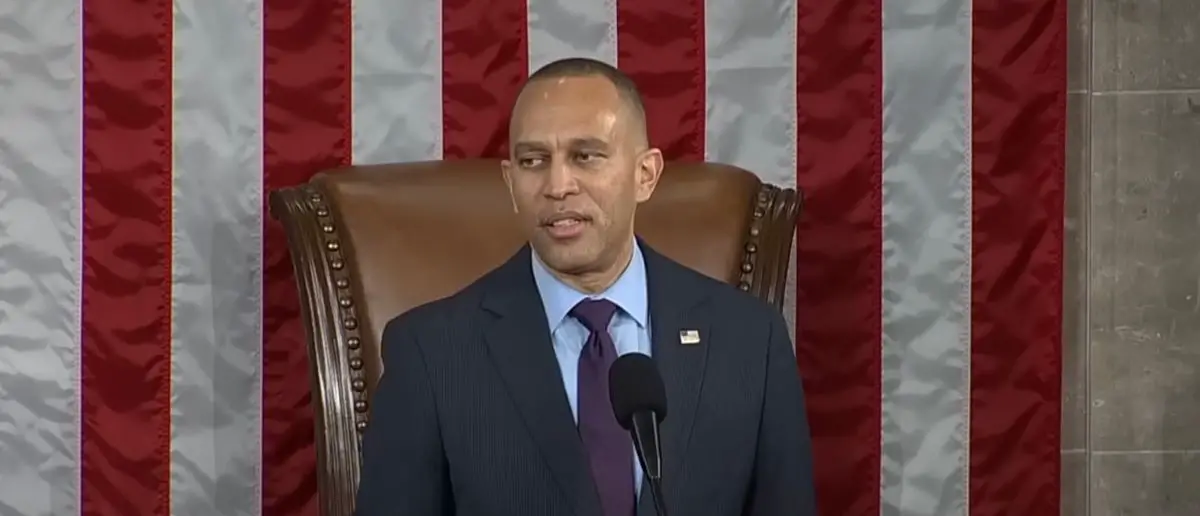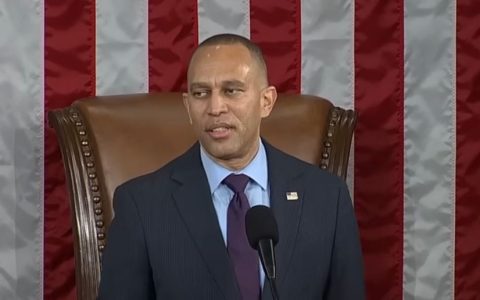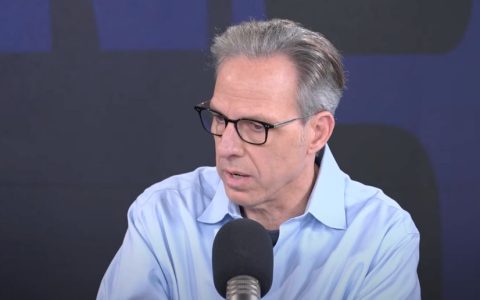
The White House has been busy implementing Trump’s plans. The consequences will be massive.
That’s why President Trump gasped when this report hit his desk in the Oval Office.
U.S. Economy Shows Steady Growth Under Trump Administration
The U.S. economy added 147,000 non-farm payroll jobs in June, according to the latest figures from the Bureau of Labor Statistics (BLS), released on Thursday. This marks a solid increase following May’s report, which showed job growth slightly above projections. The unemployment rate remained nearly steady, dipping slightly to 4.1% from 4.2% in May, reflecting stability in the labor market.
Economists had anticipated a more modest gain of 106,000 jobs for June, making the actual figures a positive surprise. The consistent job growth suggests resilience in the economy, aligning with efforts to sustain momentum in the labor sector.
A May survey by the Job Creators Network Foundation (JCNF) revealed that 58% of small business owners expressed optimism about President Donald Trump’s policies supporting their enterprises. In contrast, 41% reported feeling pessimistic, with 1% remaining uncertain. This confidence among small business owners highlights a growing belief in the administration’s economic agenda.
President Trump has pledged to bolster the U.S. economy in his second term, with a focus on curbing inflation and improving affordability for Americans. These commitments resonate with business owners seeking stability and growth opportunities.
The Trump administration’s economic policies have been credited with fostering a robust environment for job creation and business expansion. Tax cuts implemented during his first term, particularly the Tax Cuts and Jobs Act of 2017, reduced corporate tax rates from 35% to 21%, freeing up capital for businesses to invest in hiring and innovation. This policy has been cited by economic analysts as a key driver of sustained job growth, as evidenced by the June 2025 jobs report.
Deregulation has also played a significant role. By rolling back what the administration deemed burdensome regulations, businesses have faced fewer compliance costs, allowing them to allocate resources toward expansion. The Small Business Administration reported in 2024 that regulatory relief saved small businesses an estimated $65 billion annually, further fueling optimism among entrepreneurs.
The administration’s emphasis on energy independence has contributed to economic gains. By promoting domestic oil and gas production, including the expansion of drilling on federal lands, the U.S. has reduced reliance on foreign energy. This has led to lower energy costs for businesses and consumers, with the Energy Information Administration noting a 15% drop in average gasoline prices since early 2024. Lower energy costs have helped ease inflationary pressures, aligning with Trump’s pledge to make America more affordable.
The energy sector itself has seen significant job growth. According to the BLS, oil and gas extraction added 12,000 jobs in the first half of 2025, supporting industries like manufacturing and transportation that rely on affordable energy.
Manufacturing has been another bright spot in the Trump economy. Policies encouraging companies to bring production back to the U.S. have led to a resurgence in factory jobs. The National Association of Manufacturers reported that 200,000 manufacturing jobs were added in 2024 alone, with continued growth into 2025. Initiatives like tariffs on imported goods have incentivized domestic production, strengthening supply chains and reducing dependence on foreign manufacturing.
The June jobs report reflects this trend, with 18,000 new manufacturing jobs added, signaling confidence in the sector. These gains have bolstered communities in industrial heartlands, where factories have reopened or expanded operations.
Consumer Confidence and Spending
Consumer confidence has also improved, driven by steady job growth and tax policies that increased disposable income for many households. The Conference Board’s Consumer Confidence Index rose to 78.5 in June 2025, up from 74.2 a year earlier. Higher confidence has translated into increased consumer spending, which accounts for roughly 70% of U.S. economic activity.
Retail sales grew by 3.2% in the first quarter of 2025, according to the Commerce Department, with strong performance in sectors like home improvement and automotive. This spending has further supported job creation, particularly in service industries.
Trump’s trade policies, including renegotiated agreements like the USMCA, have prioritized American workers and businesses. By imposing targeted tariffs on countries with unfair trade practices, the administration has protected domestic industries like steel and aluminum. The Department of Commerce reported that U.S. steel production increased by 8% in 2024, supporting thousands of jobs in the Rust Belt.
These policies have also encouraged foreign companies to invest in U.S. operations. For instance, several Asian automakers announced new U.S. factories in 2024, creating an estimated 15,000 jobs. This inward investment has strengthened local economies and reinforced America’s global competitive edge.
The administration’s focus on infrastructure has laid the groundwork for sustained economic progress. A $1.2 trillion infrastructure package passed in 2024 has funded projects ranging from highway repairs to broadband expansion. The Department of Transportation estimates that these investments have already created 300,000 construction jobs, with more expected as projects ramp up.
Rural communities, in particular, have benefited from improved infrastructure, which has enhanced access to markets and spurred small business growth. The JCNF survey’s optimism among small business owners likely reflects these tangible improvements.
While the economy shows strength, challenges remain. Inflation, though reduced from its 2022 peak, continues to concern some analysts. The Federal Reserve noted that core inflation held steady at 2.8% in mid-2025, within a manageable range but still requiring vigilance. The administration’s focus on increasing domestic production and energy supply aims to keep prices in check.
Looking ahead, the Trump administration’s commitment to further tax relief and deregulation is expected to sustain economic momentum. Economists project that if current trends continue, the U.S. could see annual GDP growth of 3% or higher in 2026, a level not consistently achieved in recent decades.





